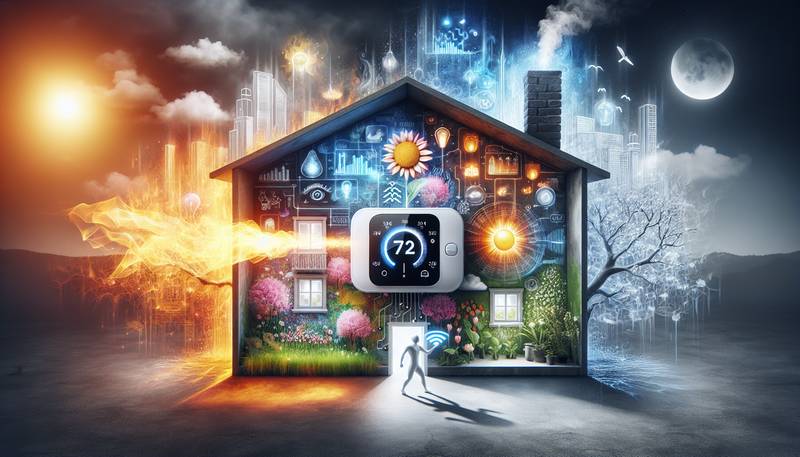Smart Thermostats: Electrical Considerations and Benefits

What’s the Fuss About Smart Thermostats?Imagine a world where adjusting your home’s temperature is as easy as clicking a button—or better yet, talking to a device that’s eavesdropping on your life. Enter smart thermostats: the home gadgets that promise to keep you cozy while keeping your energy bill in check. They learn your habits, anticipate your needs, and might even brew you a cup of coffee if you ask nicely (well, at least one day they might). But how do they really work, and what should you consider before bringing one into your home?The Electrical Wonders Behind Smart ThermostatsSmart thermostats are not just fancy gadgets; they revolutionize home temperature control with a sprinkle of advanced technology. The magic lies in their ability to connect to your Wi-Fi, allowing you to control your home’s heating and cooling from anywhere. However, this doesn’t mean you can install one like you would a regular thermostat without a second thought. First, there’s the matter of compatibility. Most smart thermostats require a 'C' wire, which is akin to a superhero sidekick providing constant power. If your system doesn’t have one, you might find yourself in a battle with compatibility issues that could make even the calmest homeowner break into a sweat.Installation: A DIY or Hire a Pro Situation?Installing a smart thermostat can be as easy as pie—assuming you know how to bake. For the daring DIY-er, you might think throwing on some gloves and diving in is a piece of cake. However, before you misinterpret a wiring diagram as an abstract painting, consider your electrical know-how.Here are some key points to ponder: - Assess your current thermostat setup: Is it wired for smart compatibility?
- Check your home’s electricity system: Familiarity with your breaker box is essential.
- Understanding voltage requirements: Remember, we're not baking here; we’re dealing with volts!
If this is starting to sound like the plot of a horror movie, hiring a professional might be the better route. Trust me; nobody wants to experience a shocking turn of events!Benefits That Make You Say “Why Not?”Once the installation is successful and your thermostat isn’t just a glorified paperweight, the benefits roll in. ★ Energy Savings: Smart thermostats learn your habits and adjust accordingly. Forget to turn down the thermostat before heading out? No problem. These tech-savvy devices will take care of it. ★ Remote Control: See that lovely sunny day outside? You can adjust your settings from your phone while lounging at a nearby café—you know, the one where they serve coffee that tastes like a hug.★ Data Insights: Many smart thermostats can provide energy usage reports, keeping you informed. It’s like having a little accountant managing your warmth budget.Now, who doesn’t like saving money while enjoying a cozy home? Integrating with Smart Home SystemsIf you're already embracing the smart home revolution (or at least considering it between snacks), a smart thermostat can seamlessly integrate with your existing systems. Imagine saying, “Alexa, make it cooler in here,” and your house obliges quicker than a cat chasing a laser pointer.Most smart thermostats are compatible with popular smart home platforms, allowing for enhanced automation. You can create schedules or tie in other devices like smart lights to mimic your presence at home. Note, however, that this might lead to unexpected conversations with your home assistant. Just don’t ask it to make dinner; it’s still working on that feature.Not All Stories Have a Happy EndingWhile smart thermostats bring great benefits, some users can face challenges. Consider the potential for software glitches or connectivity issues. Imagine finally getting home after a long day, only for your thermostat to have taken the evening off. Not ideal! Aside from tech hiccups, there are also user-induced dilemmas. Forgetting your password can lead to a lockout situation, which is less dramatic than a soap opera but equally frustrating. Always ensure you keep your login information safe, or you might find yourself turning into a modern-day thermostat whisperer.Turning Up the Heat on Smart DecisionsInstalling a smart thermostat can indeed be a game-changer for energy efficiency and convenience. While it may require some electrical know-how (or the willingness to fork over a bit of cash for professional help), the long-term benefits are hard to ignore. If you’re yearning for a home that keeps the temperature just right while saving you some precious pennies, it might be time to make the switch. Just remember: with great power comes...great responsibility! Keep it smart and your home cozy.
|
|







